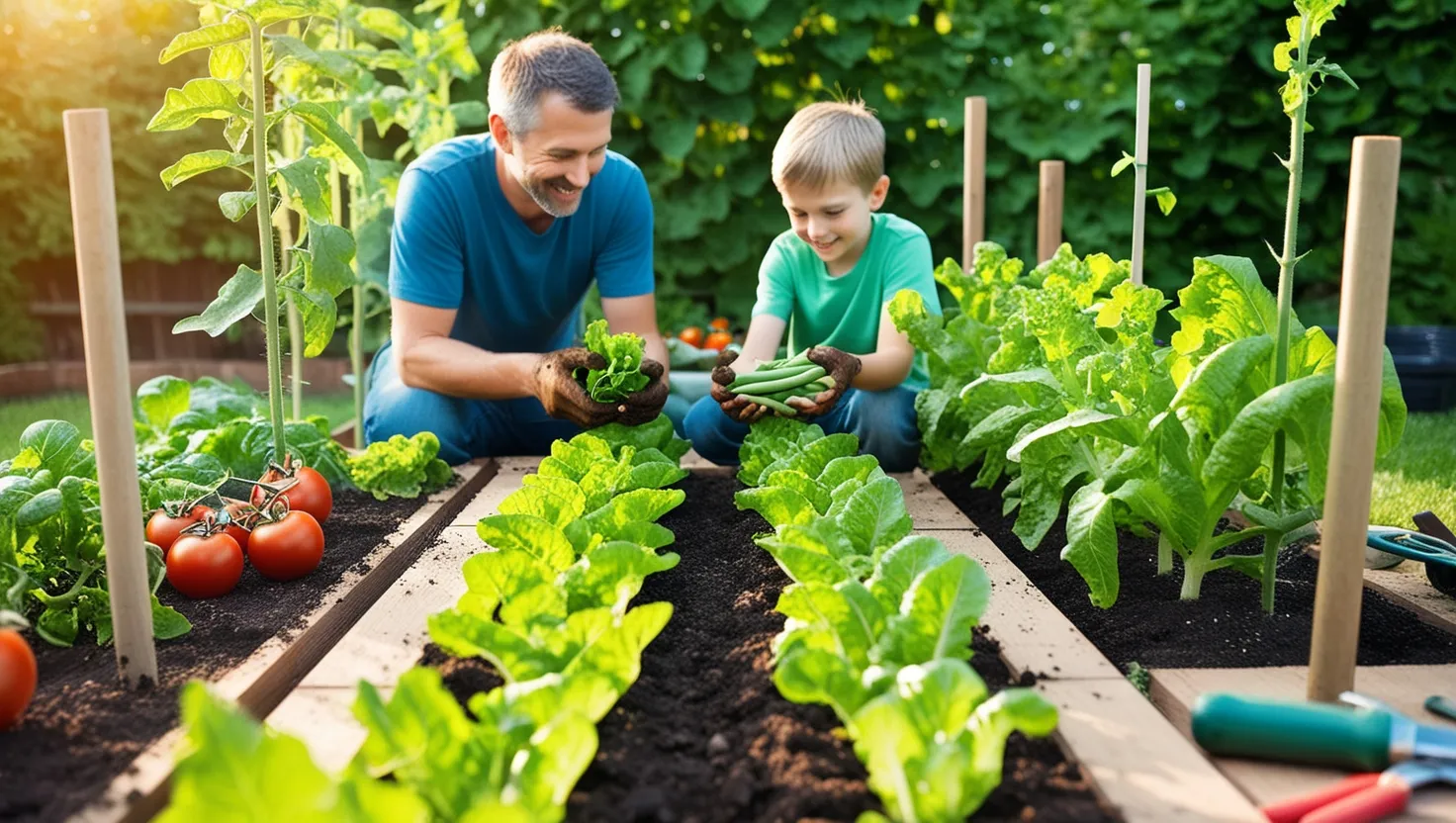Have you ever noticed the price of tomatoes or carrots going up, sometimes faster than you can pick up the next shopping basket? This is where our story begins, with a father and his young son who see the numbers on the grocery receipt quietly climb each month. Their fridge looks the same and their meals don’t get any fancier, but somehow, the bill keeps growing. The son, still learning what money really means, asks, “Why does the same food keep costing us more?” That simple question launches them both on a journey far more interesting than any economics class.
“What we learn with pleasure we never forget.” – Alfred Mercier
Let’s step into their shoes for a minute. Inflation is a word economists toss around, but for most people, it’s just frustration at paying more for the same things. What can a family do—just sigh and pay, or get hands-on and try something different? The father decides to transform his rising anxiety into positive action. He invites his son to help grow their own vegetables. Not in a big farm, not with expensive supplies. They start in their small backyard, with a couple of seed packets and lots of curiosity.
Their first trip to the garden store feels like an adventure. The son, clutching the small envelopes of lettuce, beans, and tomatoes, looks up and asks, “Will we really save money doing this?” The dad is honest. “Let’s track what we spend here and what we grow. We’ll see together.” No complicated theories, just keeping notes. Each seed is counted. Every new leaf is watched, sometimes with impatience, sometimes with excitement.
Digging in the dirt turns out to be the best kind of math class. There is measuring the distance between seeds, counting days until sprouts appear, and comparing the piles of homegrown produce against grocery store prices. A store-bought tomato costs far more than a handful of seeds. The dad points out, “Imagine if we had to buy these tomatoes every week.” Numbers suddenly mean something real.
“The best way to teach children is by example, not by precept.” – Annie Besant
Through all this, something shifts between father and son. Their shared effort pulls them closer. The child isn’t just learning how plants grow, but witnessing patience, planning, and the reward that comes from persistence. The dad gets to see his son’s small wins—his pride when the first bean climbs the pole, his surprise at how a single tomato plant can keep giving fruit for weeks.
Have you ever felt proud after finishing a project you started from scratch? That’s the feeling both discover as the garden changes week by week. There are setbacks, of course. Some seeds don’t sprout. Bugs appear. Rain doesn’t always come. But these small failures are lessons, not just disappointments. One bad season teaches them more value for each harvest.
They keep comparing. Every month, the father and son check their receipts. The grocery bill drops, slowly at first, then steadily as their skills grow. It’s not magic, and it doesn’t solve every problem, but there’s a real change—a little more money left over, a little less worry.
“Do not save what is left after spending, but spend what is left after saving.” – Warren Buffett
They also realize growing your own food isn’t only about money. It’s about choice. They decide which vegetables to try next. They taste the difference between their own carrots and the ones from the store. The boy asks, “Why does ours taste better?” They talk about freshness, about pride, about knowing exactly where their food comes from.
Isn’t it interesting how sometimes the best lessons sneak in through the backdoor? The boy’s early brush with inflation is gentle, almost invisible, but it’s more memorable than any word floating through the nightly news. He sees in his own hands why money sometimes seems to vanish, and how a little work can change that.
“Tell me and I forget. Teach me and I remember. Involve me and I learn.” – Benjamin Franklin
Their experiment becomes more than just saving a few dollars. The routine of checking the garden builds new habits. The son asks more questions, and the father answers, sometimes with facts, sometimes with stories from when he was young. They find themselves learning about weather, soil, and even a bit about the history of money—how people started bartering, then using coins, then bills, then cards.
Does growing food make the problem of rising prices go away? Not entirely. Some things will always be out of their control. But it gives them a sense of power, however small, against forces that can feel overwhelming. They don’t solve inflation, but they aren’t powerless against it, either.
Other families hear about their project and ask questions. Maybe a neighbor starts a container garden, or a friend trades zucchini for lettuce. Small connections form over fences and in kitchens. This is how communities adapt without waiting for big answers from faraway experts.
What if everyone tried a little bit of this hands-on approach? Would it grow into something bigger? That’s a question both father and son begin to wonder every time they give away a bag of tomatoes or share extra greens at school.
The act of gardening changes them. The father finds new patience, and the son gains confidence. They both feel the quiet strength that comes from working together with their hands and their minds. They build up not just their savings, but their trust in each other and their own abilities.
“Wealth consists not in having great possessions, but in having few wants.” – Epictetus
Maybe you’ve never thought much about where a carrot comes from, or why lettuce sometimes tastes bland and sometimes tastes sweet. But in their home, these little discoveries become part of everyday talk, right alongside homework and chores. The tough questions about money become less scary when answered with action instead of worry.
The biggest lesson isn’t found in the growing harvest or the shrinking bill, but in the moments of quiet teamwork. Each time they water the plants together, pick off pests, or celebrate a new sprout, they build something bigger than a garden. They build resilience—in themselves, between each other, and maybe even in those who watch and follow their lead.
“To plant a garden is to believe in tomorrow.” – Audrey Hepburn
So the next time you see the price of groceries rise, consider what you might do with just a bit of soil, a handful of seeds, and a willingness to try. The story of a father and his son reminds us that sometimes the smartest way to understand big problems is simply to get our hands dirty—and grow something new, together.






